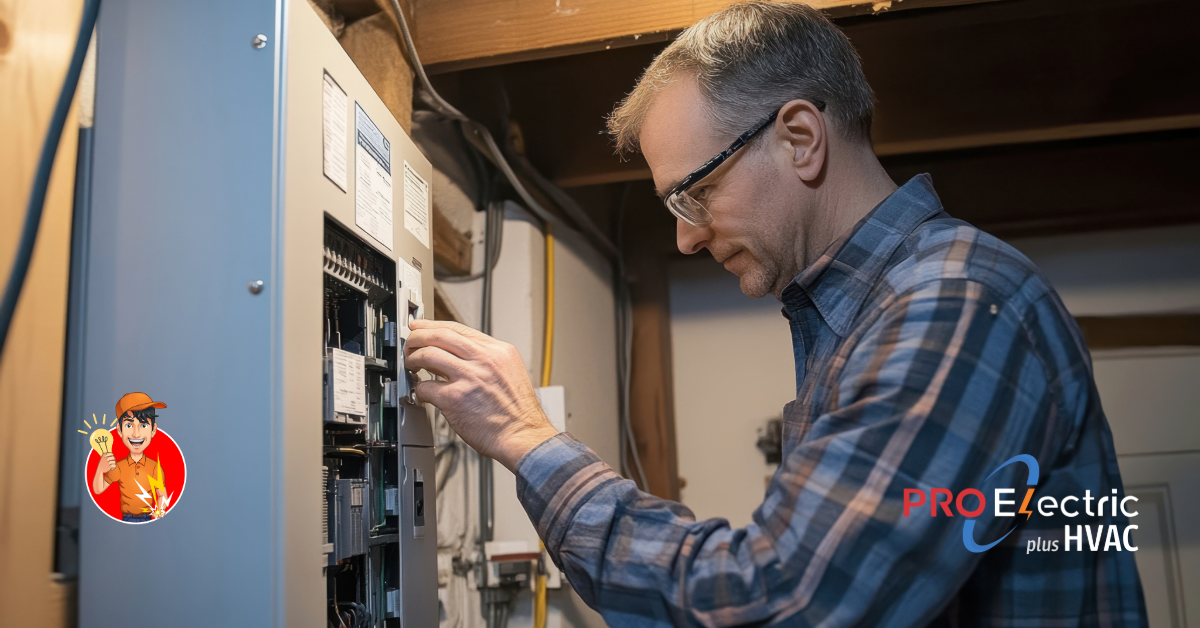By Peter, Master Electrician | PRO Electric plus HVAC | Electrical Panel Upgrades
Annandale 1960s Electrical Panels | Smart-Home Ready?
Clues your service is maxed out before you add one more gadget.
Hi, I’m Peter, an HVAC and electrical tech with PRO Electric plus HVAC.
I work in a lot of Annandale split-level homes from the 1960s.
They’re solid houses, great light, great yards, but many still run on the original 60–100 amp electrical service.
That was fine back when a “big load” was a color TV and a toaster.
Today, we plug in EV chargers, heat pumps, induction ranges, servers, and smart everything.
The old panels are trying to feed a modern appetite, and it shows.
Let me walk you through the clues your service is already maxed out—and what to do before you add one more gadget.
A true Annandale story (that I see every month)
I’m called to a split-level where the lights dip when the microwave runs.
The panel is warm to the touch.
The homeowner just installed a Level-2 EV charger.
Now the breaker trips when the dryer and heat pump run together.
Nothing “mystical” is wrong. The panel is simply out of capacity, and some of the breakers aren’t even the right match for the panel.
Why older panels struggle now
- Smaller main service. Many 1960s homes have 60A–100A service. Modern homes often need 200A or more.
- More heavy loads. EVs (30–50A), electric ranges (40–50A), dryers (30A), heat pump air handlers and strip heat, plus all the smart gear.
- Crowded or mismatched breakers. Tandem (“cheater”) breakers and non-OEM breakers cram circuits in, but they don’t create capacity—and can be unsafe.
- Aging parts. Heat, oxidation, and loose connections raise resistance and can lead to overheating.
Clues your electrical service is tapped out
If you spot two or more of these, hit pause on new gadgets and call me to check the panel:
- Frequent breaker trips (especially when two big appliances run together)
- Lights dim or flicker when the microwave, vacuum, or heat pump starts
- Warm panel cover, buzzing, or a faint hot/plastic smell
- Browned outlets or plugs that feel hot after use
- Tandem breakers everywhere, or no empty spaces left
- Rust or water stains inside the panel (often from old meter cans or gutter issues)
- Double-lugged wires under one screw, unlabeled circuits, or mystery splices in the ceiling
- Extension cords and power strips doing permanent duty because there “aren’t enough circuits”
- EV charger set to a reduced amperage to avoid trips
The 5-minute home check (do this safely, eyes only)
- Stand at the panel. Is the cover warm? Do you hear buzzing?
- Turn on the microwave while someone watches the kitchen lights. Do they dip?
- Run dryer + heat pump at the same time. Any trips?
- Look at outlets behind big loads (space heaters, treadmills). Any browning or loose feel?
- Peek at the outdoor unit and EVSE while running. Any breaker chatter or vibration at start-up?
If you answer “yes” to any of these, your panel might already be at its edge.
Before you add one more gadget: the smart plan
1) Do a real load calculation.
I’ll measure actual loads and compare them to your service rating. Guessing here is how people melt breakers.
2) Check panel health.
Brand, condition, bus temperature, main size, grounding/bonding, and whether the breakers match the panel listing. I also look for loose neutrals and overheated terminations.
3) Map your circuits.
We’ll label the whole house and find where big loads land. Many Annandale homes have too many heavy circuits on one leg.
Good / Better / Best upgrades (pick your path)
Good: Make the existing panel safer and smarter
- Move heavy loads to balance the legs
- Add dedicated circuits (no more space-heater + treadmill on the same run)
- Replace non-compatible breakers with listed ones
- Add AFCI/GFCI protection where required
- Install whole-home surge protection to save your HVAC boards, TVs, and chargers
Better: Add a subpanel
- If your main panel is decent but out of spaces, a subpanel gives room for the EV, induction range, workshop, or basement finish.
- We’ll keep wiring neat, labeled, and balanced.
Best: Upgrade to 200A (or more) service
- New meter/main combo, proper grounding, new panel, and fresh breakers
- Capacity for EV + heat pump + induction without juggling
- Option to add smart load management so big appliances play nicely together
“But my breakers don’t trip, so I’m fine… right?”
Not always. Breakers are safety devices, but they don’t catch everything—especially loose connections, overheated bus bars, or mismatched breakers that don’t trip when they should. Silent heat is the danger. That’s why I use thermal imaging and torque checks during an inspection.
What to fix right now (fast wins)
- Stop using space heaters on general-purpose circuits.
- Replace worn or hot outlets behind big loads.
- Keep extension cords for temporary use only.
- Don’t add another “tandem” just to squeeze in a circuit. Call me—we’ll do it right.
Annandale split-level quirks I see a lot
- Converted carports or basements with extra fridges/freezers on old circuits
- Laundry and HVAC stacked on the same leg of the panel
- Panels tucked in closets with poor ventilation
- Sump pumps sharing circuits with outlets (bad mix)
- Old wiring splices hidden above drop ceilings from 1980s remodels
None of these are deal-breakers. They’re fixable—and safer once we do.
Final thought
Your split-level is built to last. Your 1960s panel wasn’t built for EVs, induction, servers, and smart everything running at once.
If the signs above look familiar, it’s time for a plan. A clean, correctly sized, well-labeled system isn’t just “code.”
It’s comfort, safety, and peace of mind—and it saves money by preventing heat damage and nuisance trips.
📞 Call 703-225-822 now or book online while you’re thinking about it.



